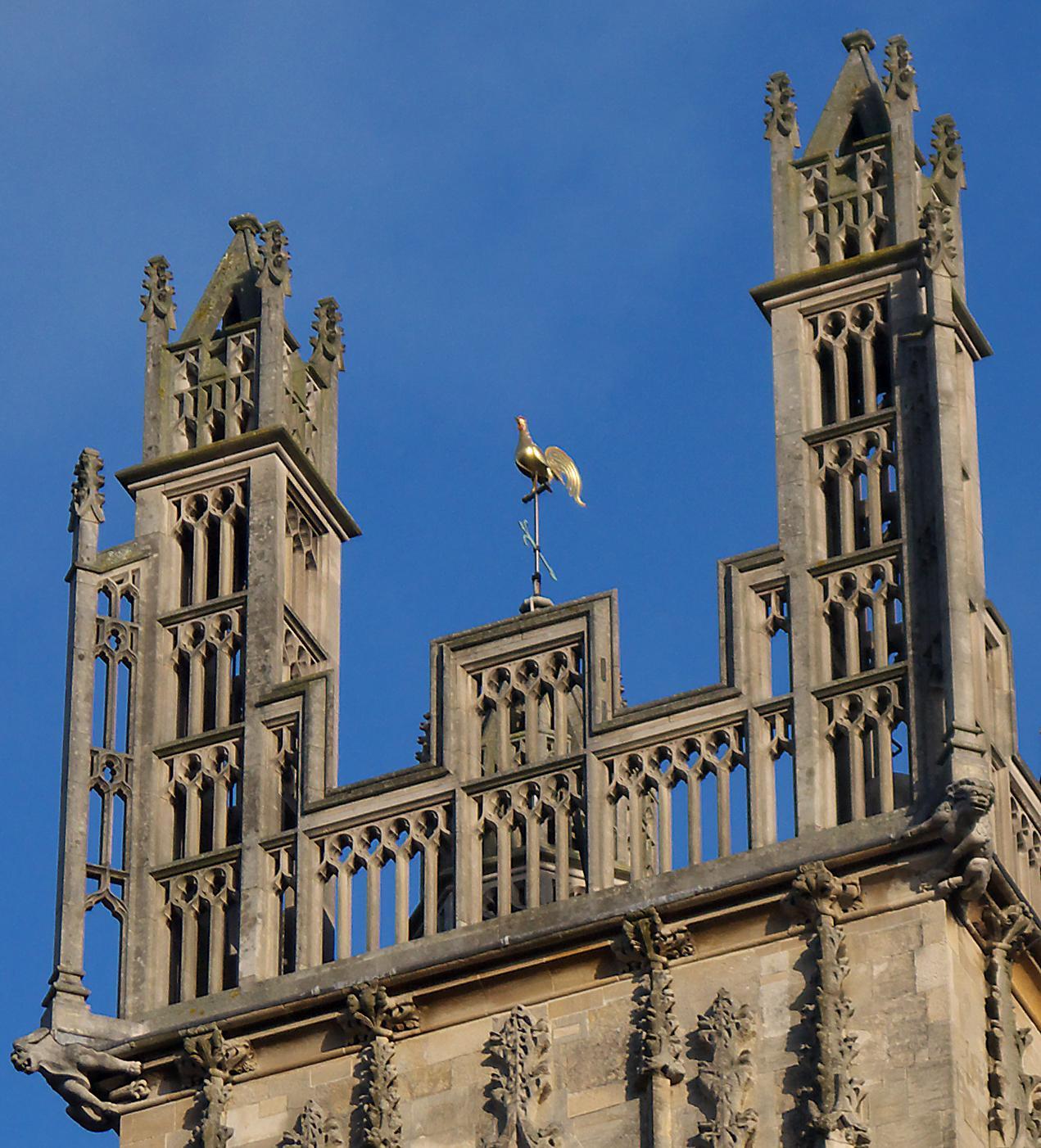St John on the Wall
Bristol, City of Bristol
A church rising out of Bristol's north gate.

The parish church for the city of Bristol.
Bristol, City of Bristol
St Stephen's was built on the site of an 11th century church, in the 14th century, and rebuilt around 1470. The tower and east window were paid for by John Shipward, four times Mayor of Bristol, who died in 1473, the tower being built by the mason Benedict (or Benet) Crosse. The site was on the banks of the River Frome, which was diverted at around this time to create Bristol Harbour.
The clerestory was repaired after a storm in 1703. The aisle and east windows were restored in 1873. The tower measures approximately 18 ft by 20 ft at its base, and rises to a total height of 152 ft. It originally contained six bells but these have been replaced over the years and the number increased to twelve. The tower is typical of Somerset churches, but with the addition of a 'Gloucestershire crown' of arcaded battlements, pinnacles and open work arcading.
The 15th century brass eagle lectern and the iron sword rest by William Edney of about 1710 were moved to St Stephen's from St Nicholas church, which was damaged in the Bristol Blitz. Edmund Blanket, a 14th century clothier and wool merchant, has a tomb on the north side of the church.
Arnaq and Kalicho, who were amongst the first Native Americans to visit Britain (having been seized by Martin Frobisher), were buried at this church as 'heathens' in 1577. A significant tomb is that of Martin Pring, who died at the age of 46 in 1627. He was a navigator, explorer and merchant and discovered what is now called Cape Cod Bay. The monument is draped with painted mermaids and mermen and verses to his exploits. Sir Walter Tyddesley, who died in 1385, and Sir George Snigge also have ornate tombs in the church. Also commemorated, but this time in a wall-mounted plaque, is Robert Kitchin, who died in 1594, a donor of one of the famous bronze 'nails' (merchants counting tables) found outside The Exchange in Bristol.

Bristol, City of Bristol
A church rising out of Bristol's north gate.
Bristol, City of Bristol
A church has stood on the present site since Norman times, this probably being the third, but in 1786 the medieval building, which had a history of instability, was judged beyond repair and pulled down.
Bristol, City of Bristol
From the 12th century this has been a place of daily prayer, and an extraordinary building, created for the glory of god.